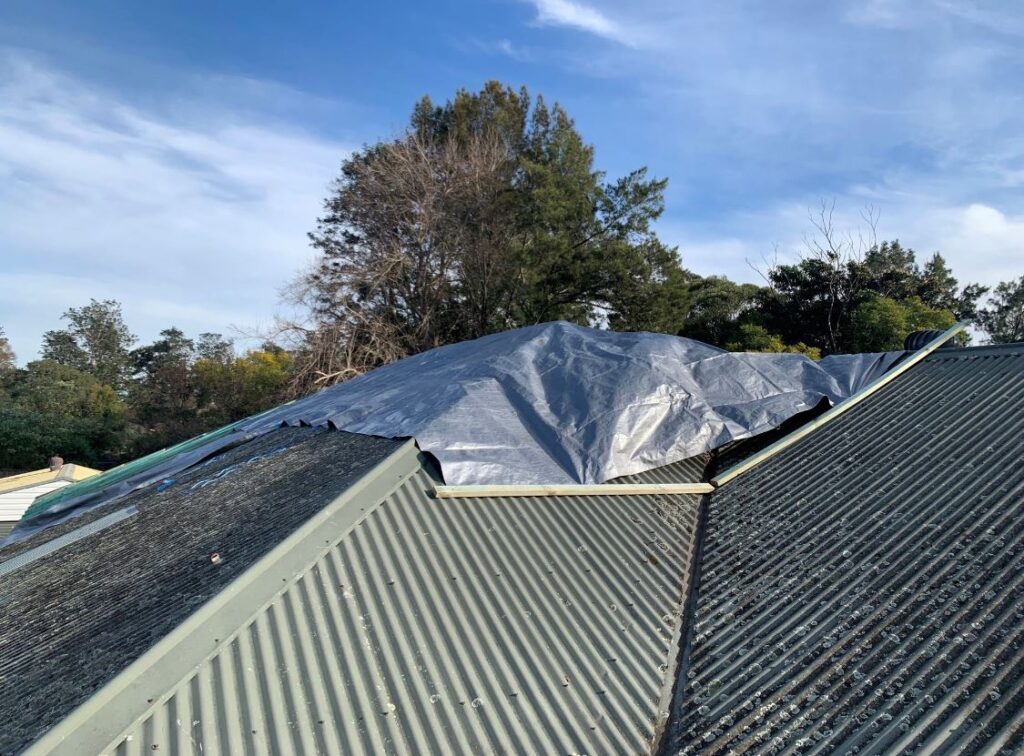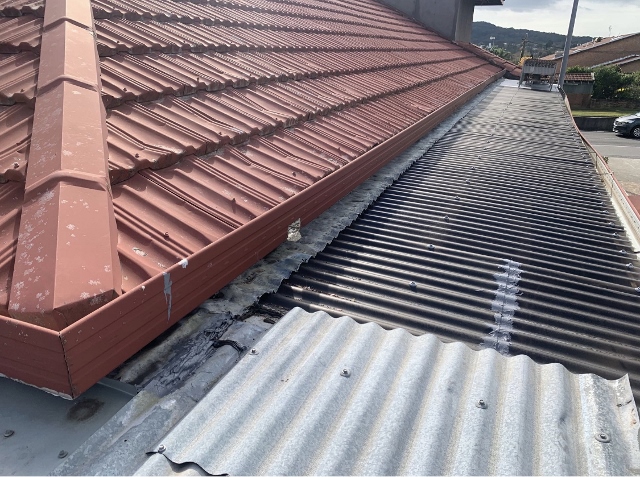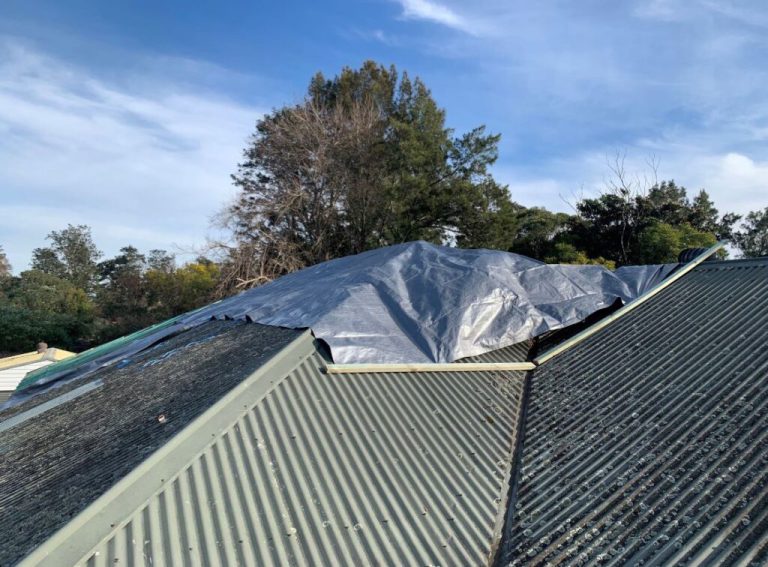A leaking roof during heavy rainfall is a critical indicator of potential underlying issues that require urgent attention. While minor rain may not reveal these problems, intense storms can expose weaknesses in your roof’s structure and materials. Proper installation and regular maintenance of roofs are vital, as they are engineered to provide robust protection against moisture intrusion, even under the most severe weather conditions.
Roofs are especially vulnerable to leaks at points where there are penetrations or transitions within the roofing system.
Key areas to keep an eye on include the regions surrounding chimneys, vents, skylights, and the intersections of different roof planes. Additional contributors to leaks include missing tiles, clogged gutters, and deteriorating flashing.
The age of the roof is also a significant factor, as older roofs typically show greater susceptibility to moisture infiltration and structural deterioration.
Identifying the signs of a leaky roof is crucial for homeowners aiming to avert further damage and costly repairs. Look for water stains on ceilings and walls, peeling paint, or damp patches in the roof cavity. Early recognition of these warning signs empowers you to tackle leaks before they escalate into more severe problems needing extensive repairs.

Explore the Main Causes and Risks Associated with Roof Leaks
Understanding the main causes of roof leaks is essential for homeowners who want to maintain their property’s integrity and value. These leaks can lead to severe damage and incur substantial repair costs. Identifying the factors that contribute to roof leaks and recognizing how heavy rain exacerbates these issues is vital for effective roof maintenance.
Discover the Primary Factors Leading to Leaks in Tile Roofs
- Damaged or Missing Tiles: Tile roofs are particularly vulnerable to damage from high winds and falling branches. When tiles are displaced, they create openings that allow water to infiltrate the roof structure.
- Cracked Roof Tiles: Aging, foot traffic, or impacts can lead to cracks in roof tiles. Even small cracks can permit water entry, potentially causing leaks within the home.
- Flashing Problems: The effectiveness of waterproofing heavily depends on the integrity of flashing around roof joints and fixtures. On tile roofs, poorly installed or deteriorating flashing can lead to significant water intrusion.
- Blocked Gutters: Debris such as leaves and twigs can obstruct gutters, leading to water overflow that backs up beneath the roof’s edges. This situation is particularly problematic for tile roofs, where water may seep through gaps between the tiles.
Identify the Critical Factors Causing Leaks in Metal Roofs
- Loose or Missing Fasteners: Metal roofs are secured by screws or fasteners. If these components loosen or dislodge, they can create openings for water to penetrate the roofing system.
- Rust and Corrosion: Over time, metal roofs can develop rust, especially in coastal areas or if maintenance is neglected. Rust compromises the roofing material and can result in tiny holes or weakened flashing.
- Flashing Failures: Flashing on metal roofs is essential for sealing edges and joints. If flashing becomes loose, corroded, or improperly installed, it creates easy access points for water infiltration.
- Blocked Gutters: Similar to tile roofs, blocked gutters can lead to water backup and overflow. On metal roofs, this pooled water may settle near seams or fasteners, significantly heightening the risk of leaks.
By proactively addressing these common issues, homeowners can keep their tile or metal roofs in excellent condition, effectively preventing costly water damage.
Evaluate the Impact of Heavy Rain on Roof Durability and Effectiveness
Heavy rainfall places additional stress on roofs, often revealing weak spots that may remain intact during lighter showers. The accumulation of pooling water can strain the roof’s structural integrity, posing serious risks—especially for flat or low-slope roofs. Excessive water can lead to sagging or, in severe cases, structural collapse.
During storms, wind-driven rain can force water underneath shingles, causing leaks even if the tiles appear intact from ground level. Additionally, heavy rain can lead to rapid gutter overflow, directing water down walls or into the home through the roof’s edge, which can result in significant interior damage.
Extended periods of rain can saturate small holes or cracks, allowing moisture to accumulate. Areas that remain damp for prolonged periods can begin to decay over time, exacerbating the problem and resulting in more extensive damage if not addressed promptly.
Identify Common Vulnerability Areas Prone to Roof Leaks
Roofs consist of various vulnerability points where leaks frequently occur during heavy rainfall. Understanding what to inspect empowers homeowners to proactively address potential issues and prevent water from infiltrating their living spaces.
Conduct Thorough Inspections of Roof Valleys and Junctions to Identify Leak Risks
Roof valleys, where two slopes converge, are critical areas that require close monitoring. These V-shaped channels manage substantial amounts of water during rainfall, making them particularly prone to leaks. Proper flashing and sealing are essential to prevent water from penetrating these vulnerable areas.
Moreover, junctions where different roof sections connect often develop gaps or weak points over time. Thorough sealing and attention during both construction and maintenance are necessary to ensure these areas remain watertight and effectively redirect water away from potential leakage points.
Essential Areas to Inspect on Tile Roofs
While tile roofs are renowned for their durability and aesthetic appeal, they come with specific vulnerabilities. Tiles can crack, shift, or become dislodged, exposing the underlayment to moisture. Older or poorly maintained tile roofs may also experience weakened pointing (the mortar securing ridge tiles).
Key Areas to Inspect:
- Cracked or broken tiles that expose the roof deck
- Missing tiles, especially in valleys or along ridges
- Debris accumulation in valleys that may obstruct water flow
- Worn or missing pointing on ridge tiles
Maintaining tiles in good condition is vital for ensuring the roof remains watertight, as even minor cracks can allow water to penetrate during heavy downpours.
Crucial Areas to Inspect on Metal Roofs
Metal roofs are highly valued for their durability and weather resistance; however, they are not immune to leaks. Over time, screws can loosen, seals may deteriorate, and metal sheets can develop rust or holes.
Important Areas to Inspect:
- Loose or missing screws and fasteners
- Corrosion or rust, particularly near fasteners or overlaps
- Worn or cracked sealant around penetrations such as vents or skylights
- Damage to roof sheets, including dents or punctures caused by hail
Metal roofs rely on proper overlaps and sealing to prevent water from seeping through joints or seams. Ensuring these areas remain in good condition is essential for sustaining a watertight roof.

Inspect Chimneys and Vent Flashings to Safeguard Against Roof Leaks
Chimneys and vents are common sources of roof leaks due to the openings they create, necessitating proper sealing. Over time, the flashing and seals around these features can deteriorate, exposing your roof to potential water damage.
Regular inspections and maintenance are vital for maintaining watertight conditions in these areas, regardless of whether your roof is tile or metal.
Thorough Inspection Checklist for Tile Roofs:
- Cracked or missing tiles around the chimney base
- Loose or degraded mortar at the edges of the flashing
- Debris accumulation in valleys near the chimney that may trap water</





Your discussion on the significance of a leaking roof during heavy rainfall really resonates with me, especially given how crucial our roofs are in safeguarding our homes. I’ve personally experienced the anxiety that comes with discovering a leak during a storm—it’s that moment where you realize your sanctuary might not be as secure as you thought.
I hear you—discovering a leak during a storm can really shatter that feeling of safety we associate with our homes. It’s unsettling to think that under our protective roofs, vulnerabilities can still exist. It often strikes us how something so fundamental to our sense of security needs regular attention and care, similar to other parts of our home.